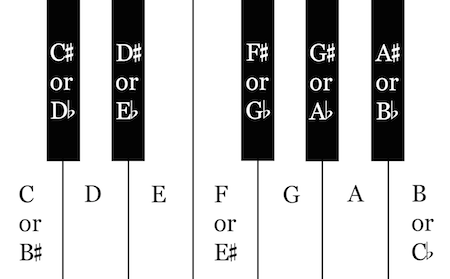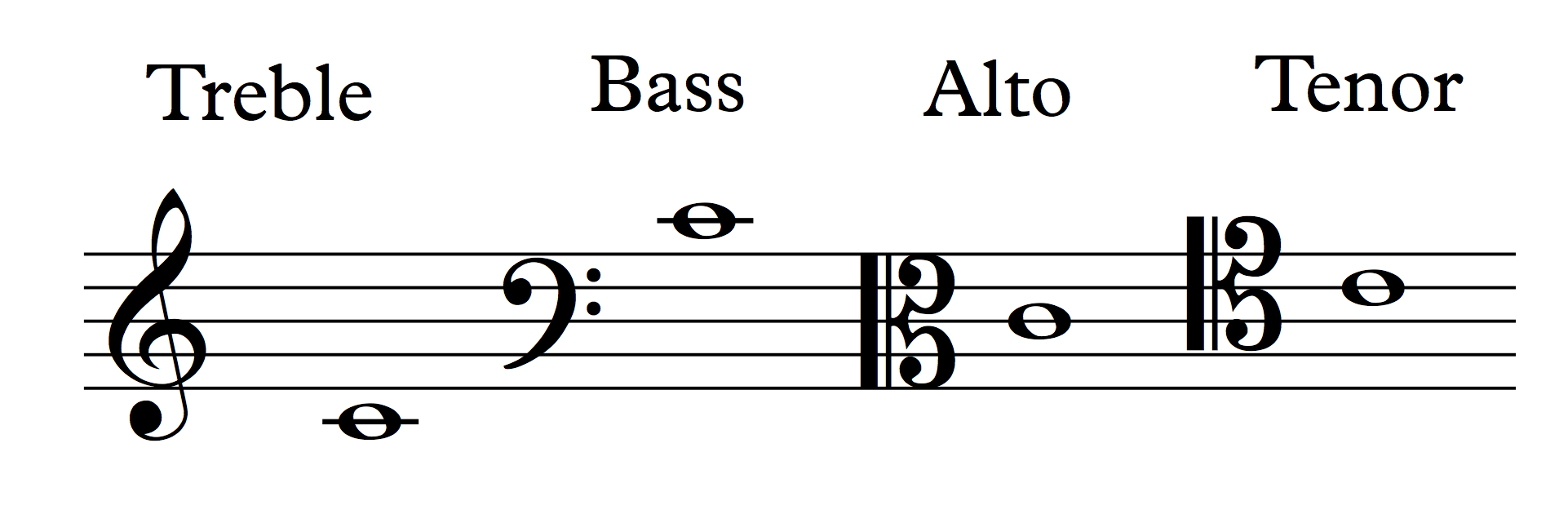Integrated Music Theory 2021-22
Discussion 1b - Labeling Pitches
Class Discussion
###Pitch Systems and Intro to Solfege Dan’s British Phonetic System vs. Sean’s Latin Solfege spelling Latin Spellings: Do,Re,Mi,Fa,Sol,La,Ti. Why Move Do? The relationship between notes doesn’t change between keys/key centers. Tonality Agnostic: System that fits all tonal centers. We need a system to demonstrate relationships across all keys. Secondary use for solfege: Singing syllable. These solfege pitches are one syllable names to make singing and sight singing easier. In a diatonic context (Voice leading, etc.) Do and ti are immovable objects. If they cross, we lose our sense of tonality. The first “key” in western harmony is Aeolian Mode (Natural Minor) having the raised Te->Ti. Care for double charps/double flats.
###Enharmonic Equivalents Enharmonic Equivalents: (i.e. Bb and A#). Same frequency/pitch, but function harmonically different in context (A# is not the third of a Gb major triad). Hertz(A=440 Hertz aka virbrations per second (for the wave). Equal temperament made for keyboradist (ruined just intonation). Pitch Class: 12 total, corresponed the 12 most common keys. Using Enharmonic Equivalents for C (B# and Dbb), has three total equivalents. Ab/G# has only two total notes of Enharmonic Equivalent because it’s surrounded by two other black keys (on the piano). We need to use triple sharps/triple flats to get the next enharmonic equivalent. The next closest letter name is a whole step away, furthest from the half steps found on the piano. 12 pitches for 7 modes (weird ratio).
###ISO System International Standard Organization (Responsible for determining how much a kilogram weighs, how long a second is, the worlds roundest sphere, atomic clock, etc. Home base in Central Europe). Also responsible for our lettering system based around A=440Hertz. Letter names fixed to specific letter names and more importantly, octaves. How does the ISO system label octaves? Treble Clef: C4 is the line below, Alto Clef: right in the middle, Tenor clef: fourth line up, Bass Clef: one line above. C4=Middle C. Be able to visually see who the clefs interact which eachother on a grandstaff and clefs useful for transpositions (i.e. Tenor Sax/Baritone Sax). The numeral in the ISO system tells us where each octave is. The numeral changes at C, instead of A (little wierd). Known that the remaining notes on the keyboard (A0, B0, etc.) exist.
Housekeeping notes: Double check your discord access. Homeowork assignemnts are posted on discord. Need staff paper (blanksheetmusic.net) <- it’s free!
Further Reading
From Open Music Theory
The Keyboard
The keyboard is great for helping you develop a visual, aural, and tactile understanding of music theory. On the illustration below, the pitch-class letter names are written on the keyboard.

Enharmonic equivalence
Notice that some of the keys have two names. When two pitch classes share a key on the keyboard, they are said to have enharmonic equivalence. Theoretically, each key could have several names (the note C could also be considered D♭♭, for instance), but it’s usually not necessary to know more than two enharmonic spellings.
Octave Designation
When specifying a particular pitch precisely, we also need to know the register. In fact, if all you have is C-sharp or B-flat, you do not have a pitch, you have a pitch-class. A pitch-class plus a register together designate a specific pitch.
We will follow the International Standards Organization (ISO) system for register designations. In that system, middle C (the first ledger line above the bass staff or the first ledger line below the treble staff) is C4. An octave higher than middle C is C5, and an octave lower than middle C is C3.
Here is the pitch C4 placed on the treble, bass, alto, and tenor clefs.

The tricky bit about this system is that the octave starts on C and ends on B. So an ascending scale from middle C contains the following pitch designations:

And a descending scale from middle C contains the following pitch designations:

Pitches on the alto staff are as follows:

Pitches on the tenor staff are as follows:
Any accidentals follow the octave designation of the natural pitch with the same generic name. Thus a half step below C4 is C-flat4 (even though it sounds the same as B3), and a half step above C4 is C-sharp4.
Note that a complete designation contains both the pitch-class name (a letter name plus an optional sharp or flat) and the register (the ISO number indicating the octave in which the pitch is found). Unless both are present, you do not have the full designation of a specific pitch.
